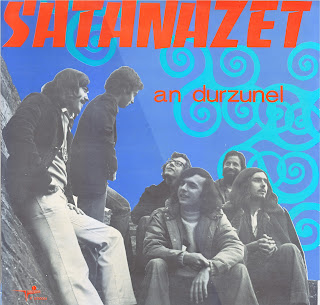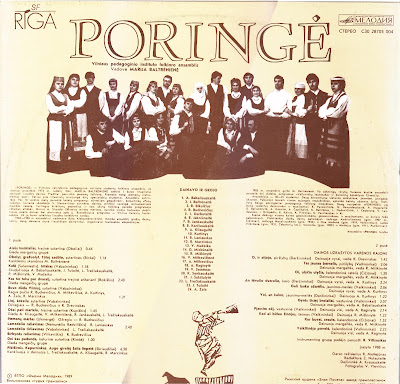SATANAZET / AN DURZUNEL
Vélia, 1973, n° 2230004
Satanazet (the Devils in Breton) was one of the first band in Brittany to mix Breton and Irish repertoires. The band was the gathering two brothers, Patrig and Dominig (Breton spelling) Molard and four other musicians. Dominique has passed away while Patrig is still in activity on the scottish bag pipe or the uilleann pipe. In 1973 there was no Irish pipes; Patrick got his own set some years later; another member was the accordion player Alain Le Hégarat who was also an uilleann piper later. Among the two musicians who are guests there is Alan Kloatr on wooden and classical flutes one of the first French musicians to have got an English flute used in Irish music.
Seven tracks out of eleven are Breton, two are Irish, one is mentionned as Irish-Appalachian and a fourth one is of Scottish inspiration. All the tunes are traditional except for track B1 (an dro elfenn) a superb composition by Le Hégart who was also member of a bagad and pipe band and track B4 by Youenn ar Mao which is a mixture of Scottish music and American bluegrass.
I must say that most of the second melodic voices played on fiddle or mandolin are not great (often too ambitious in relation to the instrumental level) but this is an interesting document about the Breton revival in the early seventies; Kloatr on flutes is very good as well as the tin whistle, bombard and bagpipe played by P. Molard.
P. and D. Molard as well as A. Le Hégarat were members of Ogham afterwards.
An durzunel means the partridge in Breton and is the name of a song played on B5
This second hand album is not in a top state but it's not desperate either ...
download.wav










































